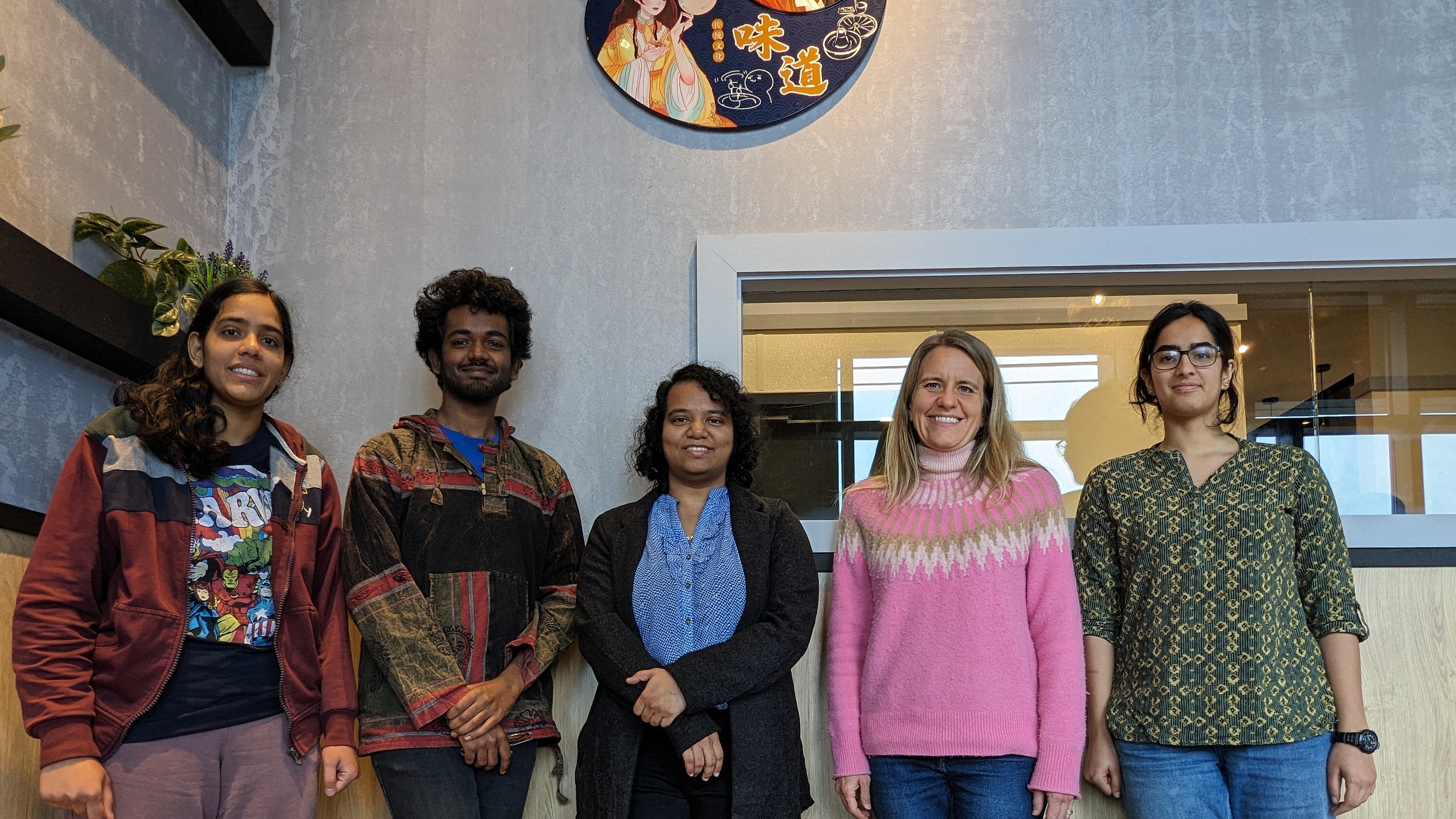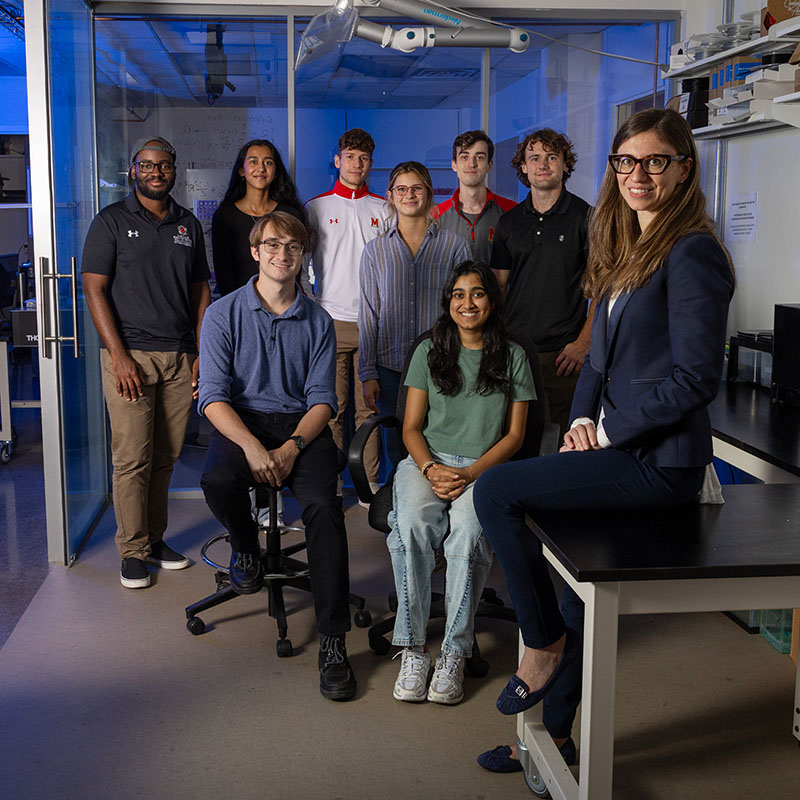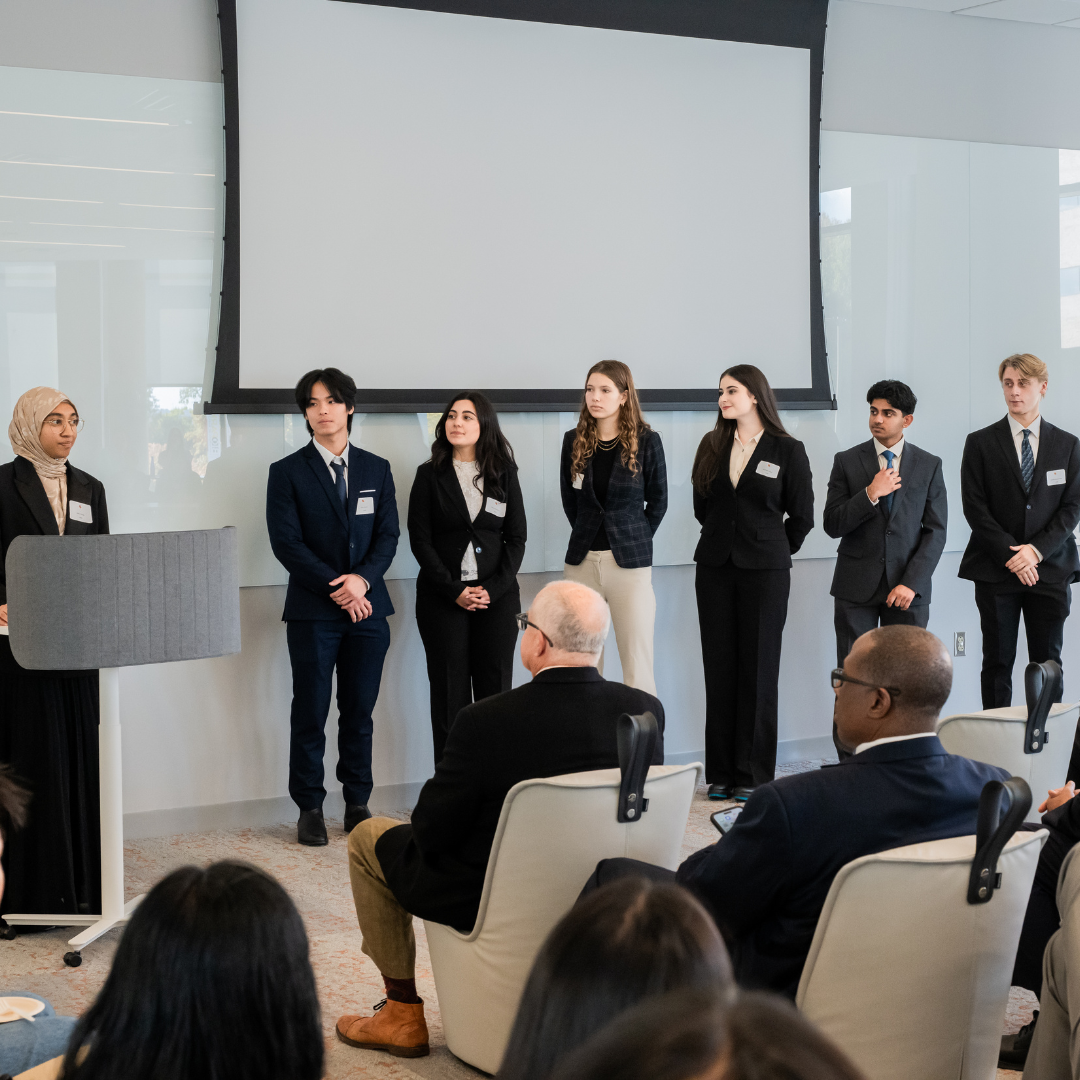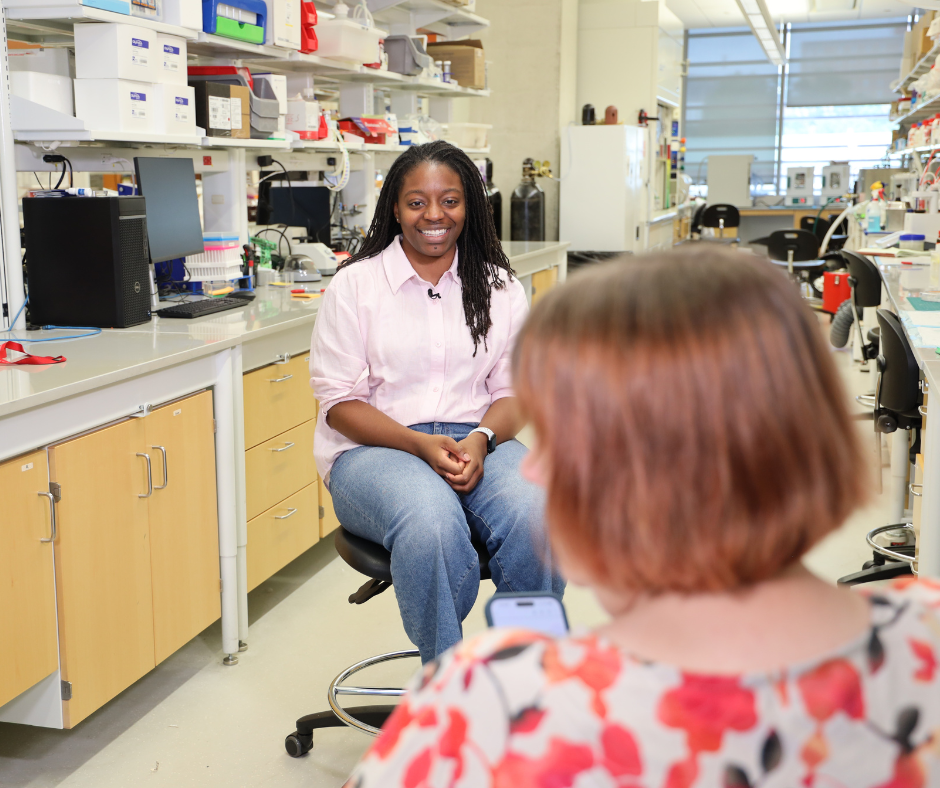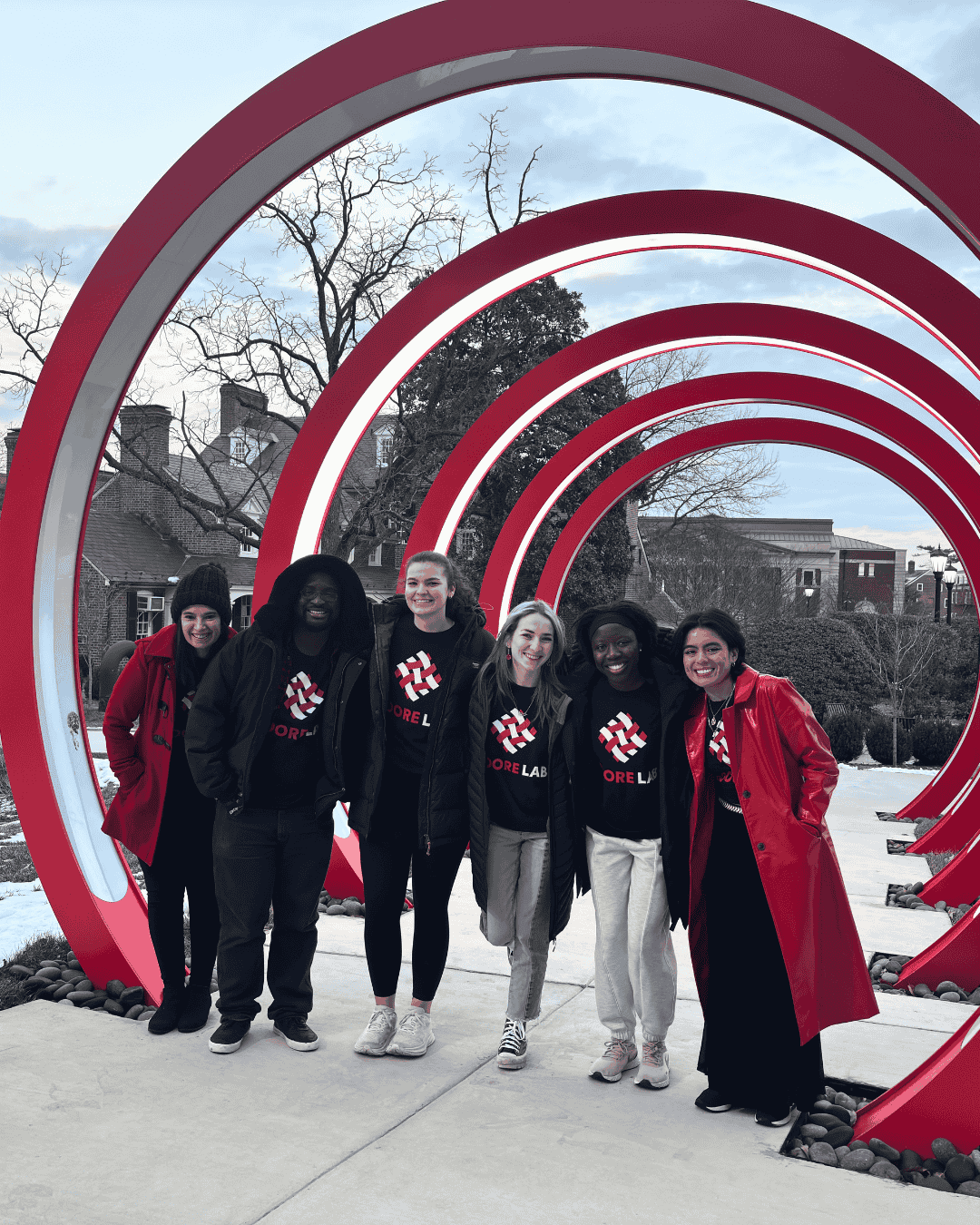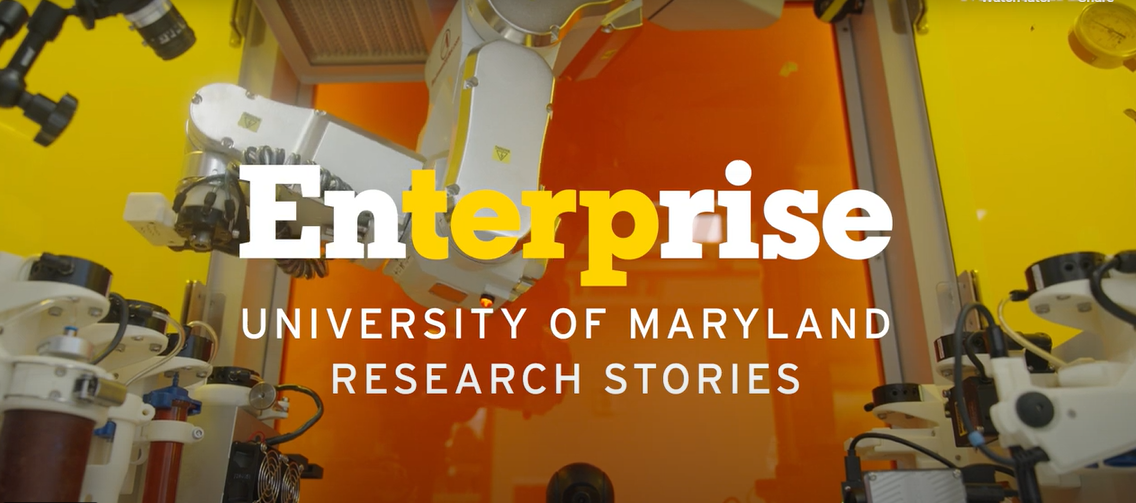News Story
Sochol-led Team to Develop 3D-Nanoprinted Neurosurgical Tools

University of Maryland (UMD) Mechanical Engineering (ME) Associate Professor Ryan Sochol, along with ME Associate Professor Mark Fuge, Johns Hopkins University Assistant Professor Axel Krieger, University of Maryland School of Medicine (UMSOM) Professor Dheeraj Gandhi, and UMSOM Associate Professor Miroslaw Janowski, has been awarded a four-year, $2.7 million grant from the National Institutes of Health (NIH)/National Institute of Biomedical Imaging and Bioengineering (NIBIB) to develop new classes of microcatheters for neurosurgery. Sochol, who directs the Bioinspired Advanced Manufacturing (BAM) Laboratory at UMD, will serve as Principal Investigator (PI).
The project builds on recent advancements achieved at the BAM Lab, in which Sochol and his team 3D printed entire soft robots with fully integrated fluidic circuits, including a soft robotic hand that was able to play Nintendo’s Super Mario Bros.
“We’re taking the concepts behind that soft robotic hand and shrinking them down to the size of a microcatheter using our 3D nanoprinting strategy,” explained Sochol. “But instead of playing Nintendo, our goal is to enable neurointerventalists to actively steer the catheter during neurosurgical procedures to reach target sites in the brain safer and faster than ever before.”
To address these navigation challenges, the team proposed to create novel microcatheters that can be actively steered using fluid pressure during neurosurgical procedures. The project, entitled 3D-Nanoprinted Soft Robotic Microcatheters with Integrated Microfluidic Circuitry for Cerebrovascular Surgery, leverages recent breakthroughs at the intersection of machine learning (ML), 3D printing, and the field of soft robotics, which centers on creating new types of flexible, inflatable robots that are powered using fluids like water or saline rather than electricity.
Video: in a prior publication, Sochol’s group demonstrated the central concept of 3D-printed soft robots with integrated fluidic circuits at larger scales, including a Nintendo-playing soft robotic hand.
The project also builds on the team’s work developing ML frameworks for designing soft robotic catheters, including recent publications in the journals IEEE Transactions on Medical Robotics and Bionics and Frontiers in Robotics and AI. Fuge, who served as senior author on both publications, will lead the ML initiatives of the project to design the novel 3D-nanoprinted microcatheters.
“By enabling active steering and navigation through small, complex, and delicate blood vessels, these soft robotic microcatheters could offer unique promise to improve the safety and efficacy not only for the treatment of brain aneurysms, but also for a wide range of minimally invasive surgeries currently considered challenging or high risk,” said Sochol. “We are excited to begin investigating this potential through this new NIBIB R01 grant.”
Published July 1, 2022


